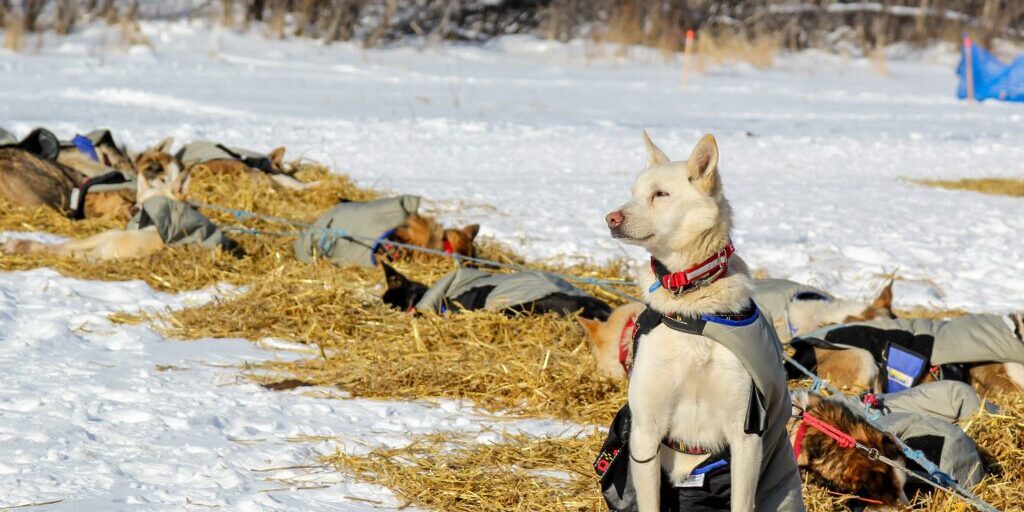The first three mushers to arrive in Huslia all had 16 dogs on the line—the same number they started the race with nearly 500 miles ago. Up and down the leader-board, mushers are arriving with big teams and dropping far fewer dogs than in recent years.
Kristy Berington says that might have something to do with this year’s race route over so many long, flat stretches of river.
“I think if you’re gonna hurt yourself, it’s gonna be on the hills; you know, it’s a tough grind going up them, and then you go too fast going down ‘em, or something like that. So, I think that’s where shoulder injuries can come up. But yeah, this is like being on a treadmill on the river, it’s flat and smooth.”

Early in the race, there were concerns about recent snows obscuring long segments of the trail. But Linwood Fiedler says between the formidable cold weather and work of trail-breakers, it’s turned out to be ideal terrain for running dogs.
“It’s been like a sprint track. I mean, except for a couple areas where it was slow getting into Ruby, outside of that it’s been a hard, fast, firm, trail. And we’re not going down the Alaska Range; you tend to get a little banged up doin’ that at times. So combination of flat, trotting trail and a really firm, nice base like what we’re standing on right now. I mean, it’s great!” He laughs.
Mushers may start dropping dogs as they come off their 24-hour rests and make their way toward more dynamic terrain on the overland run from Unalakleet to Kaltag. As the race speeds up along the coast, some mushers prefer to reduce the number of dogs they have to care for to shorten rest stops and mitigate the risk of having to haul a dog that quits pulling. And, as Jeff King points out, having more dogs on the line doesn’t necessarily make a musher more competitive.
“I wouldn’t lose too much sleep about number of dogs. A few years ago, Buser dropped six in Nikolai and went on with those ten and finished second.”
Currently, the smallest teams still have 11 dogs.









